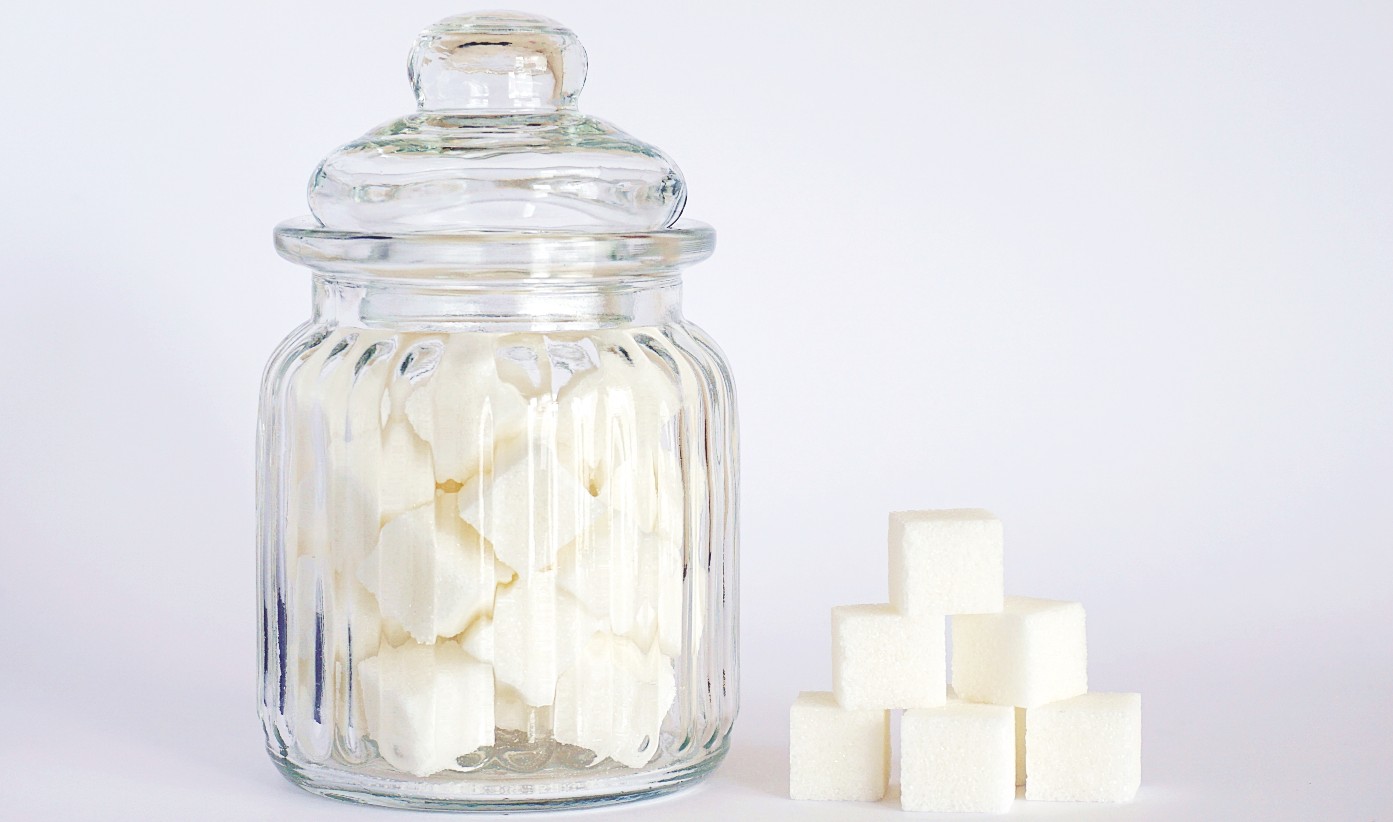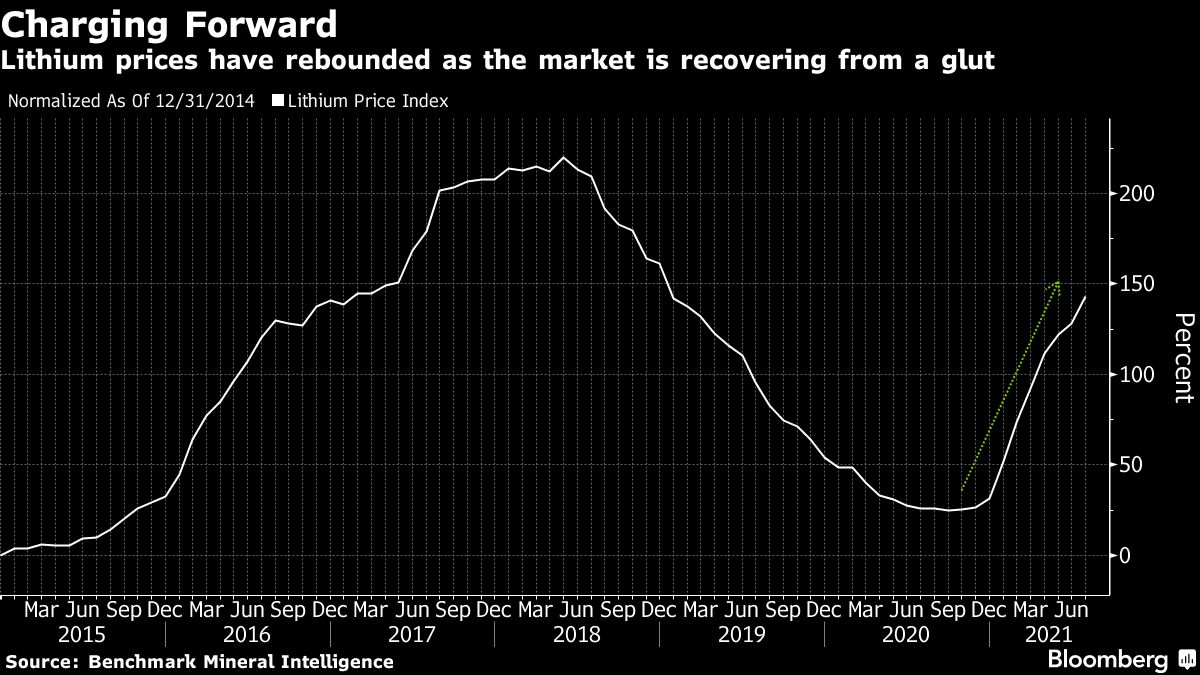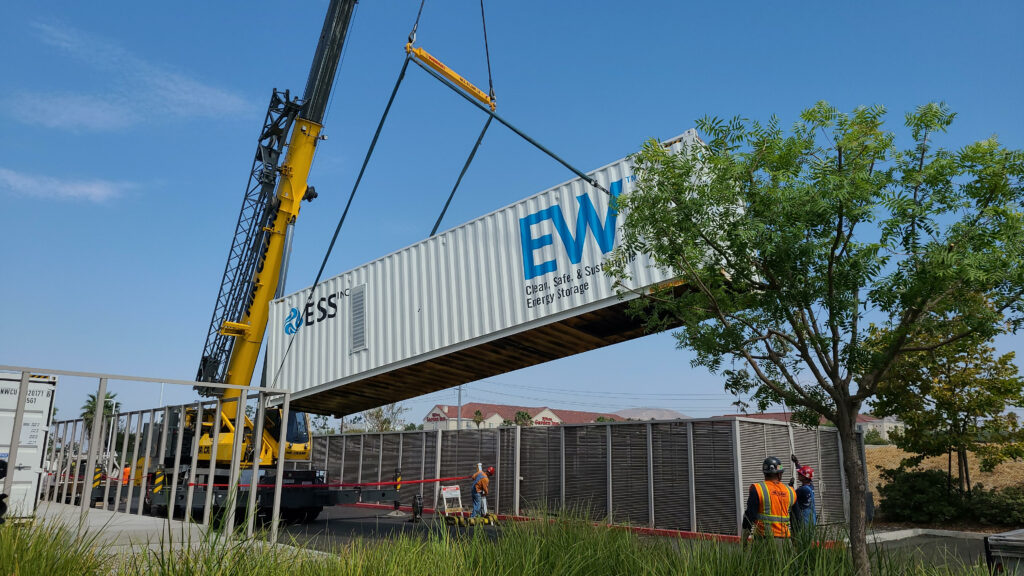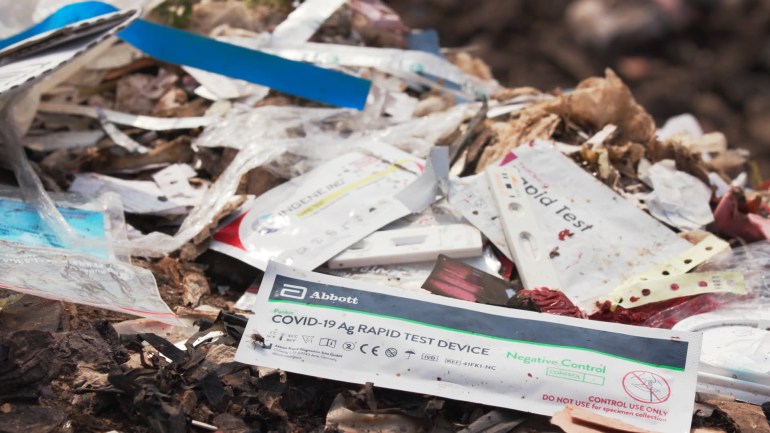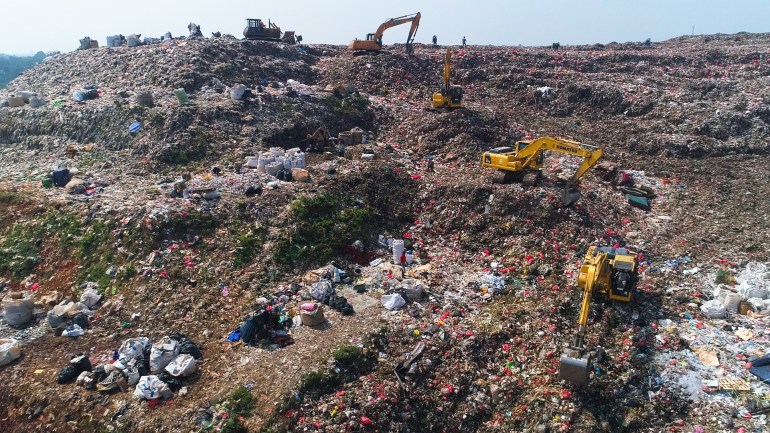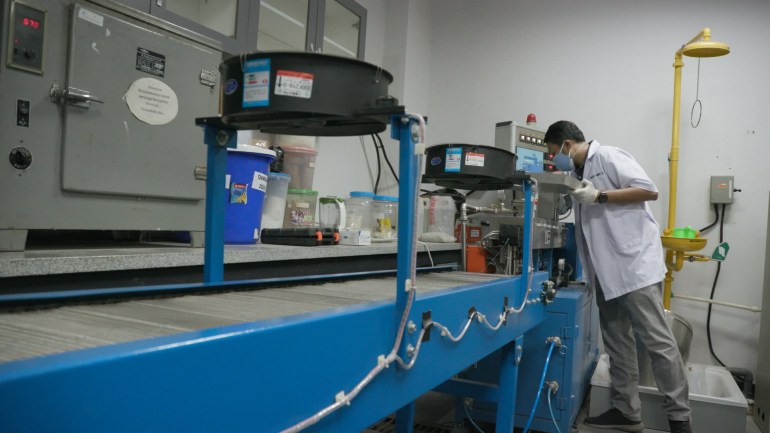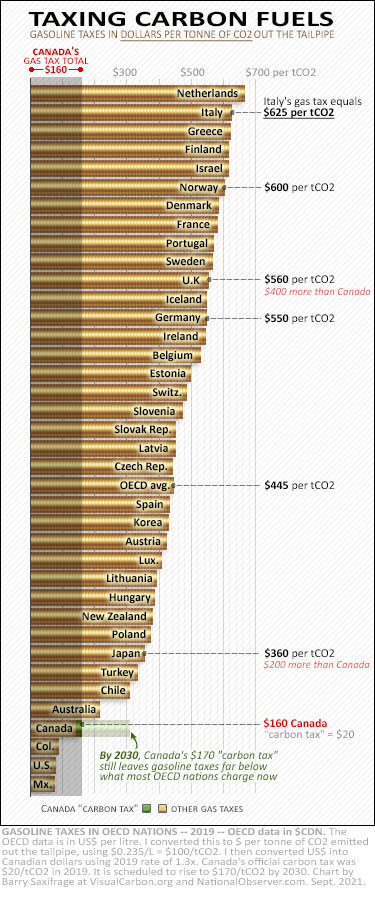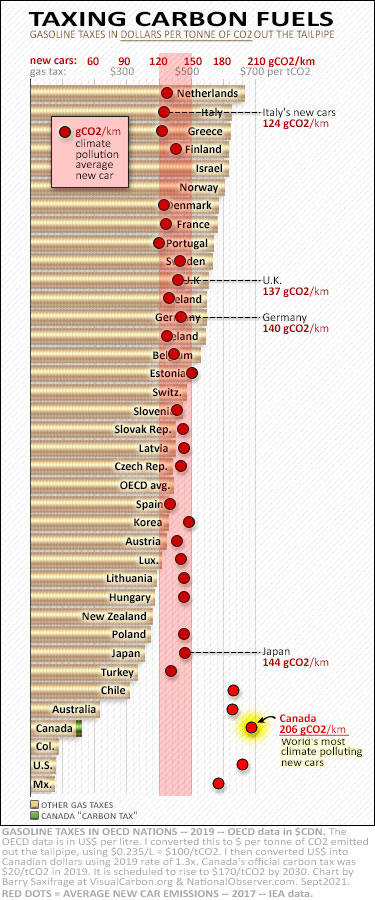Amazon tripled its profits during the pandemic while its workers experienced sickness and stress. Workers at the company are fighting back by launching a unionization drive that could reshape Canada’s labor movement.

The Teamsters’ union has began organizing Amazon workers in at least nine of its fourteen Canadian facilities. (Watchara Phomicinda / MediaNews Group / the Press-Enterprise via Getty Images)
For most people, the COVID-19 pandemic has been a disaster. By all accounts it has exacerbated income inequality, imperiled workers forced to put up with unsafe conditions to keep their jobs, and increased the ranks of the working poor, unable to afford housing and food. The hardship has, however, not been evenly distributed.
Amazon is one of the many companies that has done well during the pandemic. In April, the Financial Times reported that the multinational conglomerate had recorded two successive quarters of over $100 billion in sales. The company’s profits have more than tripled over the course of the last year and a half.
Having weathered the pandemic, Amazon now faces a new threat. The Teamsters’ union has launched organizing drives in at least nine of its fourteen Canadian facilities. If successful, these unionization drives would mark a watershed moment for organized labor in North America. To date, no attempt to unionize an Amazon warehouse has been successful in Canada or the United States.
Success in Canada may point to a way forward for more than just Amazon’s twenty-five thousand Canadian workers. Amazon is totemic of a form of capitalism that is dependent on exploiting precarious, underpaid yet “essential” workers. Striking a blow against the behemoth could lead to a rise in organizing campaigns in other key industries.
Several Teamsters members and Amazon workers spoke with Jacobin’s Mitchell Thompson to shed light on Amazon workplace conditions and the aim of union organizers.
The Nisku Vote
The Teamsters are organizing “Fulfillment Centers” in Alberta, British Columbia, and across Ontario, from Kitchener and Cambridge to Milton and the Greater Toronto Area. So far, the most successful drive has been at the YEG 1 fulfillment center in Nisku, Alberta. There, Local 362 filed for a vote to certify union membership on September 14, confident it has the support of at least 40 percent of the facility’s nearly eight hundred workers.
The Nisku facility opened officially in the summer of 2020, with the promise that it would offer opportunities to workers negatively impacted by low oil prices and production cuts. In just over a year, the Nisku warehouse has been the site of over a hundred COVID-19 infections.
Because the warehouse was deemed a critical industry by the government it was exempted from closure. This was despite the fact that for nearly five months, from November 14, 2020 to March 20, 2021, the workplace was listed officially as “in outbreak.” Workers bore the risk, throughout this time, without a sustained pay raise.
Amazon has recently announced a paltry pay increase for some Canadian fulfillment center workers. The company will increase workers’ pay to a starting salary of between $17 and $21.65 an hour. This may be an attempt to get in front of the Teamsters’ organizing drives. Even so, as the union notes, $17 per hour is well below the average unionized warehouse wage and the increase comes with no promise to change workplace conditions.
A change in workplace conditions is a sticking point for many Amazon workers. Local 362 spokesperson Christopher Monette told Jacobin that “we hear that workplace conditions are brutal — they’re brutal on the body.” Monette adds that workers are shocked by the fact that they are forced to endure such appalling working conditions whilst their bosses rake in record profits:
When Amazon workers at Nisku look at their working conditions, where there have been so many COVID-19 cases and look at the incredible wealth this company generated through the pandemic, there is an obvious disconnect.
Amazon is well known for putting profit ahead of workers’ health. Before COVID-19, its productivity monitor — measuring the intervals between scanning stock or “Time Off Task” (TOT) — forced workers to put speed before all else. The cost of not keeping up to pace is workplace discipline or termination. Research into working conditions at the company has linked the speed at which Amazon’s management requires employees to work with countless injuries in the United States. Amazon has acknowledged that this system continued across Canada throughout the pandemic.
According to Monette, the company expects its Nisku workers to scan a new item at least every nine to twelve seconds.
If they fall behind, their wages can be affected, and their job security is put into question. We’re seeing young, fit workers with lower back pain that they should not be having because they’re struggling to keep up with these unreasonable standards.
“The Real Danger Comes From the Nature of the Work”
Workers at other Amazon facilities across Canada told Jacobin conditions are just as hazardous as those found in the United States. “The real danger comes from the nature of the work,” explained one Ontario Amazon picker. “Managers keep a very tough target of the number of units we stow per hour and keep pressuring workers to meet the target,” she added.
“They’re asked to do more than what they’re humanly capable of doing,” said James Killey, an organizer with Teamsters Local 879 near Hamilton. “They’re watched all the time. Penalized if they get hurt. They count days off as most companies do and when they’re up for review, that goes against them.”
“They suck blood,” the Ontario picker remarked.
Nobody can take these long hours of continuous lifting, stowing, and picking. I have seen people literally crying when things go beyond their control. Another worker told me that he was so scared to go high on aisles with the pit machine, she used to cry out of fear.
In both 2019 and 2020, data from Ontario’s Workplace Safety and Insurance Board indicated that the company’s injury rate in the province increased sharply from its rate in 2017. This was due in large part to “overexertion” and sprains. Across Canada, the Toronto Star found, many of Amazon’s facilities had injury rates above the company’s US average.
“Social distancing while we’re supposed to be picking the products is not happening,” an Amazon worker told Ricochet. “Because there’s a time limit on what we’re supposed to be picking, we can’t be standing around waiting for people to get out of the way.”
“There’s a general atmosphere of fear and anxiety,” another worker told Jacobin. “In your contract, it says you can be fired whenever.”
A Wave of Unionization
If successful, these unionization drives could result in the first unionized Amazon facilities in North America. Late last year, Amazon fought off a drive in Alabama using a campaign of union-busting and intimidation of staff. In a conciliatory letter to shareholders intended for broad circulation, former CEO and now executive chair of Amazon, Jeff Bezos, told shareholders he doesn’t “take comfort” in the defeat of the union drive.
In the letter, Bezos emphasized the company’s brighter side: “We terminate the employment of less than 2.6 percent of employees due to their inability to perform their jobs.” The executive and space travel hobbyist also noticed that 42 percent of injuries at Amazon are musculoskeletal disorders and conceded that something had to be done about it. Instead of letting workers slow down, however, Bezos’s letter suggested using “sophisticated algorithms” to “rotate employees among jobs that use different muscle-tendon groups” before they develop disorders.
More recently, the same Amazon management claimed that a union at its facilities would overrepresent the “voices of a select few.”
But neither union-busting nor Bezos and his “sophisticated algorithms” have stopped Amazon workers from organizing in Canada. “We’ve had thousands of conversations with thousands of Amazon workers across this country. They’re stopping to chat with union organizers, they’re taking those leaflets,” Monette says. “When they see Teamsters organizers outside their facilities for the first time their reactions are, ‘Oh finally a union — where have you been?’’’
Worker Power
Amazon’s profits don’t come from the sky, from the charm of Jeff Bezos, or the intestinal fortitude of its current CEO Andy Jassy. Throughout 2020, Amazon’s workers moved billions of dollars’ worth of goods with their hands. Worked to the bone, they delivered enormous revenue to the company’s owners. Without these workers, nothing would be moved and no orders “fulfilled.”
It is not because their workers are insufficiently productive that Amazon is able to keep wages low and working conditions grim. Amazon is able to neglect its workers because its management is confident that they will always show up the next day to move their goods and deliver their profits.
It’s true that tight margins and just-in-time production can be used to weaken worker power. But it is also the case that these on-a-dime production methods can also maximize the impact of even a short-term refusal to work.
A union can provide Amazon’s workers with the power to grind the companies production to a halt, and demand what is owed to them. This could empower other more precarious and low-wage “essential workers” — long neglected by the official labor movement — to stand up for themselves and assert their rights. “The general momentum that the campaign has is indicative of how COVID-19 has changed workers’ perceptions,” Monette says.
During the Alabama drive, Thomas A. Stefanik of Torkin Manes LLP, one of Canada’s largest corporate law firms, warned that Canadian employers “should be very wary of what happened at Amazon.” Stefanik can read the writing on the wall. Looking to the future, he advised that bosses batten down the hatches to prepare for impending worker militancy:
Although employers are generally engaged almost full time now combatting pandemic-related issues, now may be the best time to seek assistance and advice in preparing for a post-pandemic union organizing campaign.
Just weeks prior to the announcement of the Teamster union drive, one of Canada’s largest newspapers asked whether a “wave of unionization” is sweeping retail and other low-wage sectors. Last week, workers in Alberta, Canada’s least labor-friendly province, put the grocery chain Real Canadian Superstore on notice. Members of the United Food and Commercial Workers International Union voted 97 percent in favor of strike action.
In January, the Toronto Star reported that union density rose through 2020. This increase is due to both job losses at nonunion workplaces and to prominent union drives by mistreated “essential workers” in health care, retail, and food service.
If Amazon workers exercise their right to unionize, other workers will take note. Because of the company’s profile and reputation, a union win at an Amazon warehouse will signal to other workers that they can also fight, and win, against their bosses. Amazon workers choosing to come together to demand dignity, respect, and proper wages will be a win for everyone.
Mitchell Thompson is a writer, researcher, and occasional radio producer in Toronto.

